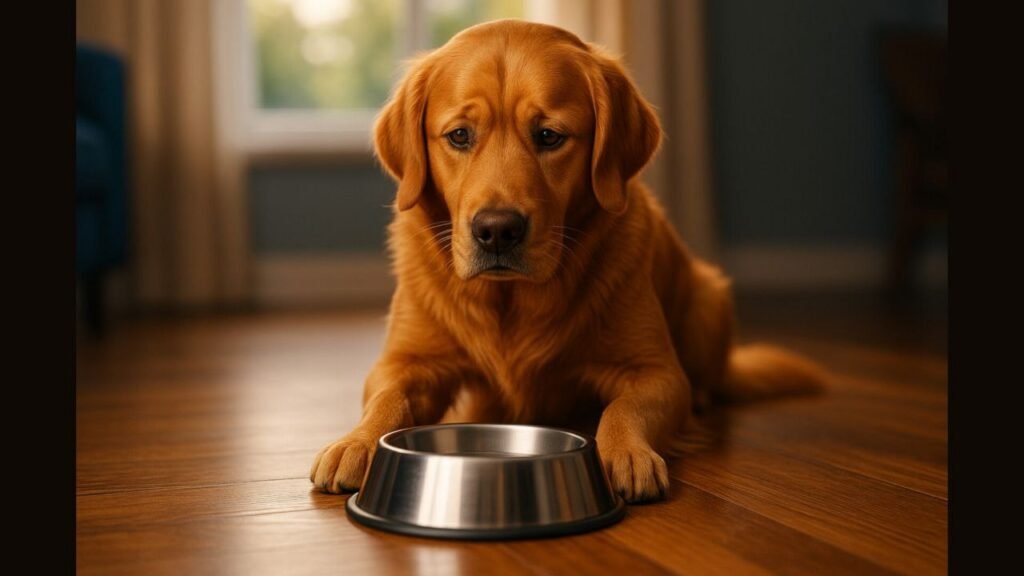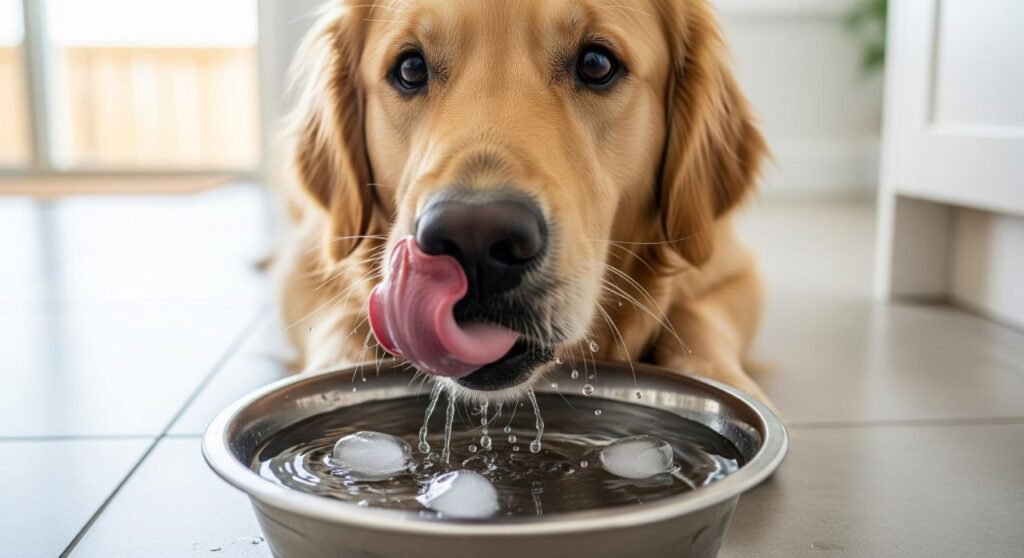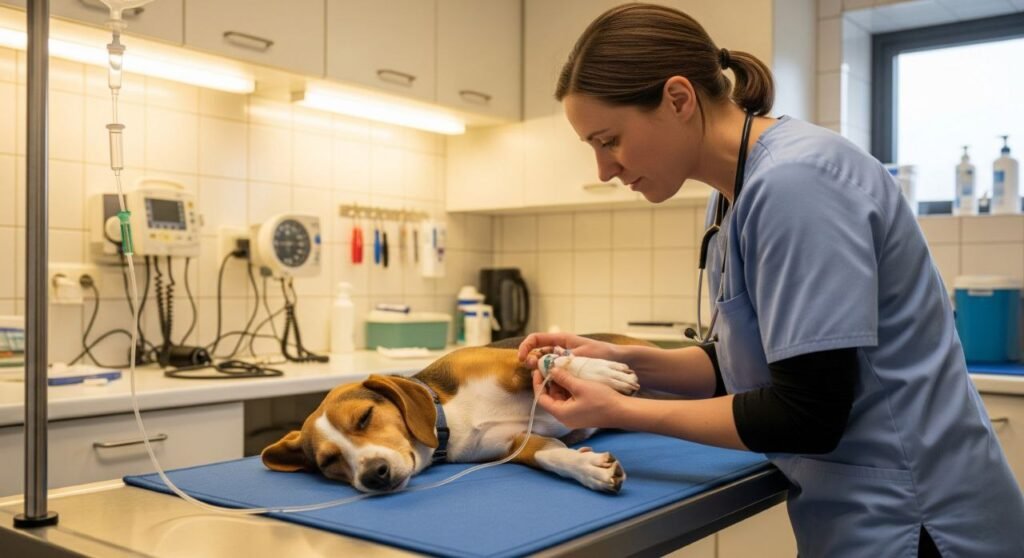Dog Not Drinking Water? Possible Causes and When To Call Your Vet
Water is essential to a dog’s health, just as it is for humans. A sudden decrease in your dog’s water intake can be concerning, as it may signal an underlying issue. While some fluctuations in drinking habits can be normal—such as during cooler weather or after eating wet food—persistent or complete refusal to drink water could point to a health problem.

Here’s a breakdown of possible causes and guidance on when it’s time to involve your veterinarian.
Possible Causes of Decreased Water Intake
1. Dietary Changes
Dogs who eat canned or homemade food often drink less water because these foods have higher moisture content. If you’ve recently switched from dry kibble to wet food, a decrease in drinking may be completely normal.
2. Weather and Activity Level
Cooler weather and less physical activity can naturally reduce your dog’s thirst. If your dog has been more sedentary or the temperature has dropped, this might explain the reduced water consumption.
3. Stress or Anxiety
Changes in environment, a new pet or person in the home, or even travel can stress your dog and reduce their desire to eat or drink. Dogs that are nervous or scared may temporarily refuse water.

4. Mouth or Dental Issues
Painful conditions such as broken teeth, infected gums, or oral ulcers can make drinking uncomfortable. Your dog may avoid drinking simply to avoid pain.
5. Illness or Infection
Dogs with infections or other illnesses often show reduced appetite and thirst. Conditions such as kidney disease, urinary tract infections, or gastrointestinal problems can lead to decreased water intake.
6. Nausea or Upset Stomach
If your dog is feeling nauseous or has an upset stomach, it may avoid drinking water to prevent vomiting. This is common with gastrointestinal disorders or poisoning.
7. Old Age
Older dogs sometimes drink less due to reduced physical activity or underlying age-related illnesses. Cognitive decline can also affect their eating and drinking habits.
8. Medication Side Effects
Some medications can alter thirst. If your dog recently started a new drug, check with your vet to see if reduced thirst is a side effect.
Warning Signs to Watch For
If your dog isn’t drinking water but otherwise seems normal, observe for a day or two and try to encourage drinking by offering fresh, cool water or ice cubes. However, seek veterinary help immediately if your dog shows any of the following:
- Lethargy or weakness
- Vomiting or diarrhea
- Dry gums or sunken eyes
- Loss of skin elasticity (a sign of dehydration)
- Refusal to eat for more than 24 hours
- Unusual behavior, confusion, or disorientation
Dehydration can escalate quickly in dogs and become life-threatening. In some cases, your vet may need to administer fluids intravenously or identify and treat the root cause.
How to Encourage Your Dog to Drink
While you’re monitoring the situation, try these tips to stimulate your dog’s thirst:

- Change the water frequently to keep it fresh and cool.
- Add ice cubes or a splash of low-sodium chicken broth to the bowl.
- Try a pet water fountain—some dogs prefer running water.
- Offer wet food or add water to dry kibble.
- Use clean, non-metal bowls if your dog dislikes certain materials.
When to Call Your Vet
Call your veterinarian if:
- Your dog hasn’t drunk water for more than 24 hours.
- There are additional symptoms like vomiting, diarrhea, or weakness.
- Your dog has pre-existing health issues, especially kidney disease or diabetes.
- Your puppy or senior dog refuses to drink—both age groups are more vulnerable to dehydration.

A dog not drinking water isn’t always an emergency, but it should never be ignored. Pay attention to your dog’s overall behavior and symptoms, and when in doubt, contact your vet. Prompt care can prevent more serious complications and help your pup stay healthy and hydrated.

